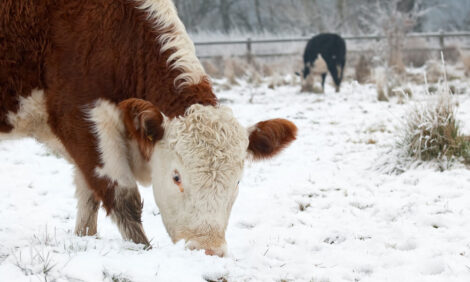



Beef, Lamb Exports Expected to Break $3bn
NEW ZEALAND - Both beef and lamb exports are expected to break the $3 billion mark for the first time as high lamb, mutton and beef prices bump up this season’s forecast profit for sheep and beef farmers, according to Beef + Lamb New Zealand’s (B+LNZ) Mid-Season Update.The milestone for lamb exports is predicted to be reached on the back of a forecast 14 per cent increase in average export value. Meanwhile, total beef export receipts, which passed the $3 billion mark in 2014 15, are expected to be $3.2 billion in 2017 18 – down 1.1 per cent.
B+LNZ Chief Economist Andrew Burtt says that the service’s forecast of farm profit before tax has also been revised up to $126,300 for the All Classes Sheep and Beef Farm in 2017 18 – up 39 per cent on 2016 17.
"Sheep and beef prices have stayed strong despite increases in the number of sheep and cattle processed so far this season. This demonstrates that international meat markets have been strong.
"However, improved pasture availability and tighter remaining livestock availability will support prices for the remainder of the season. Strong wool continues to perform poorly while fine wool has improved.
"The fast start to the season has been a significant feature of the production year so far."
For the December 2017 quarter, the numbers of lambs, sheep and cattle processed were all up, leaving fewer to be available for January to September compared to the 2016 17 season.
Beef prices remain strong
After total beef export receipts passed th e $3 billion mark in 2014 15, they have remained steady and are expected to be $3.2 billion in 2017 18, says Mr Burtt.
"A rise in average value per tonne to $7,100 – up 3.2 per cent – will offset the forecast 4.6 per cent decrease in beef export volume."
Export beef production is expected to dip for the 2017 18 season at 590,000 tonnes – down 1.3 per cent – due to a slight decrease in average carcase weights (-0.7 per cent) and slightly fewer cattle processed ( 0.6 per cent).
The average cattle farm gate price is forecast to be 529 cents per kilogram – up 6.9 per cent.
The US dollar is expected to strengthen through 2018, supporting good returns from the US and China, which are New Zealand’s largest beef export markets. Increasing Chinese demand is helping to accommodate the global increase in beef production.
Lamb returns continue to rise
Revenue from sheep, which is a major driver of the improved farm profit before tax, is expected to be up 22 per cent and contribute 47 per cent of All Classes Sheep and Beef Farm revenue.
The average farm-gate price for lambs has been revised upwards to 661 cents per kilogram or $122 per head – up 15 per cent on last season – due to the higher proportion processed earlier in the season at good prices. The forecast at the start of the season was 555 cents per kilogram.
Total receipts from lamb exports is estimated to surpass $3 billion for the first time. The average lamb export value is expected to reach $9,800 per tonne – up 14 per cent on last season – while export volume has remained steady (+0.7 per cent).
"Total mutton receipts are also forecast to be up strongly – by 11 per cent to $602 million. A 24 per cent increase in the average value per tonne to $6,500 more than offsets the forecast 7.3 per cent drop in mutton export volume," says Mr Burtt.
"These factors have supported strong farm gate prices for mutton, which are estimated to be up by 37 per cent to average 394 cents per kilogram for the 2017 18 season."
Mr Burtt says tight sheepmeat export supplies from New Zealand and Australia are driving the strong export receipts because together the two countries account for around 90 per cent of international sheepmeat trade, excluding intra European Union trade.
In the December quarter, the number of lambs processed was up 13 per cent and the number of adult sheep processed was up 15 per cent. The higher production was driven by the good farm gate prices and dry conditions in many regions.
As a result, B+LNZ’s Economic Service forecasts availability of lambs and adult sheep for the remaining January to September period to be down 2.2 per cent and 17 per cent respectively.
Wool returns remain disappointing
"The average auction price for fine wool is expected to increase b y 25 per cent, but a 20 per cent decrease in the average price for strong wool will bring overall average wool price down by 1.0 per cent," says Mr Burtt.
TheCattleSite News Desk


